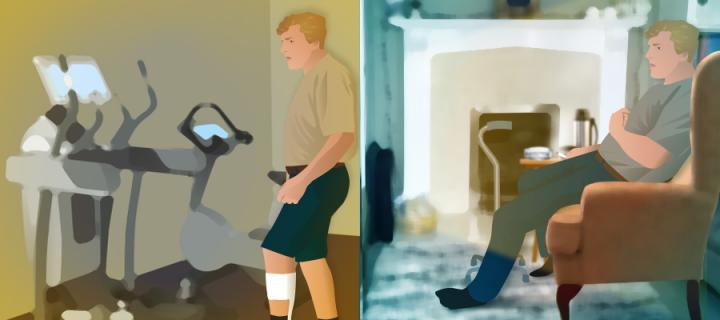STARs Module: Management of Tone & Spasticity After Stroke
Nineteenth e-learning module added to free STARs healthcare resource: "Management of Tone & Spasticity After Stroke: A Role for Everyone".

Overview
Over the last nine months the Interactive Content team have worked in partnership with Chest Heart & Stroke Scotland (CHSS) and NHS Scotland to produce the 19th e-learning stroke advancing module for the open access Stroke Training and Awareness Resources (STARs) website.
Management of Tone & Spasticity After Stroke: A Role for Everyone
This training module focuses on providing healthcare professionals with an increased understanding of abnormal tone after stroke, how to identify tone changes, managing abnormal tone and specialist spasticity services.
The module was written by a team of authors led by Mark Smith, AHP Consultant in Stroke, NHS Lothian and Gillian Alexander, AHP Stroke Consultant, NHS Greater Glasgow and Clyde. The project was managed by Fran Bailey, e-learning project manager at CHSS. Jackie Aim was the project lead for the Interactive Content team.
Over the course of the nine months there were several author group meetings and workshops held at CHSS. The meetings included invaluable input from experienced professionals selected by CHSS. In addition to Mark and Gillian, the author group included:
- Charlie Chung, Stroke Clinical Specialist Occupational Therapist, NHS Fife
- Niall Hughes, Consultant Physician, NHS Greater Glasgow and Clyde
- Susie Hughes, Advanced Specialist Orthotist, NHS Greater Glasgow and Clyde
- Irene Nicol, Specialist Nurse, NHS Lothian
- Debbie Strang, Specialist Physiotherapist, NHS Lanarkshire
Once the content was finalised it was further reviewed by a number of top healthcare professionals across Scotland to ensure it met the learning outcomes.
Developing a module that focuses on tone and spasticity
The 'Management of Tone & Spasticity After Stroke' module is comprised of several different sections: normal movement and anatomy of muscle, treatment, specialist spasticity services, a fictional case study and the module test.
In the case scenario the learner follows Dave (virtual patient) in two different ways at the same time. This leads to different consequences and outcomes for muscle tone and spasticity in each version of Dave (similar to the film 'Sliding Doors'). One version of Dave goes to an acute stroke unit and the other Dave goes to a general ward. In both versions Dave is seen at the accident and emergency department.
The decision was made early on that the best way to focus on understanding and identifying tone and spasticity would be to film a person who had actually experienced a stroke. Fran sourced a volunteer who was happy to be filmed, Allan Ritchie had taken part in filming before and features in the BMA highly commended 'Self Help 4 Stroke' resource. Mark Smith describes and shows us the details of Allan’s tone and spasticity, this illustrates the importance of identifying and managing tone. The filming was carried out by John Archer who has been previously involved in several CHSS video productions.
Interactive content
Two different interactive content technologies were used in the module: H5P and Tumult Hype. H5P was chosen for publishing quizzes and interactive video, where key moments in the timeline can be paused and supplemented with additional information. Tumult Hype was combined with bespoke artwork for animated medical illustrations and patient scenarios.
Open educational resources
All the STARs resources are all available as free digital downloads, under the Creative Commons Attribution-NonCommercial-ShareAlike 4.0 International License.
Creative Commons licence summary (BY-NC-SA)
Copyright © Chest Heart & Stroke Scotland and The University of Edinburgh 2017 CC BY-NC-SA
Resources
STARs Module: Management of Tone & Spasticity After Stroke (open access e-learning module)
Media Hopper - tag (downloable videos)
Vimeo - album (downloadable videos)
H5P repository (downloadable interactive content)
Flickr - album (downloadable images)
Related articles
Interactive Content team receive BMA commendations (Self Help 4 Stroke)
(Ed. this article was originally published on 27 Oct, 2017)

